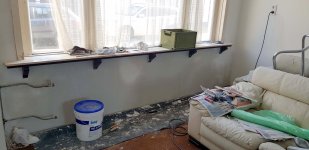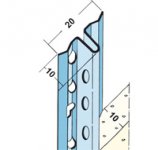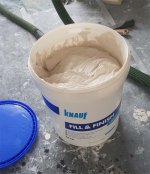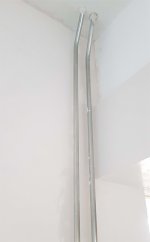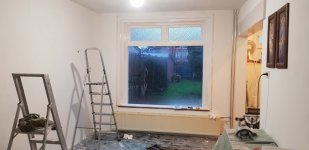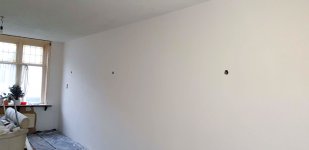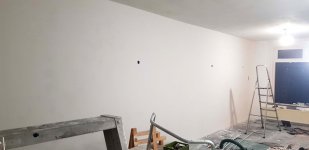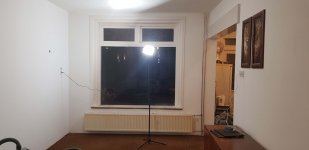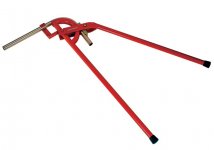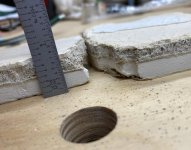Time to tackle the next wall. Another example of old, rotten mess. 5 layers of wallpaper again. I tell you, sometimes I just want to get the jackhammer out and level the entire wall instead of scraping that paper off.

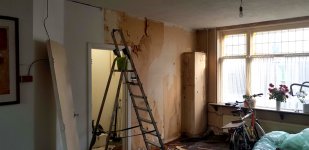
I was lucky, a large piece came off at once. I was not so lucky with the rest.
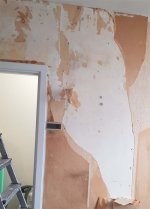
The sockets and switches in the room are 46 years old. Worn out, plastic crumbled, and the metal brittle and corroded by the chalk from the wall. They will have to go.
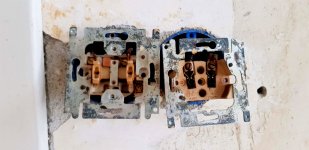
More mess. My father just ripped the old plinths from the wall and put wallpaper over them without levelling anything out.

But in the end I got the wall free off all paper. Now I can build it up again.
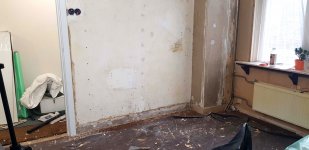
Started plastering it all. Put a corner profile on the corner of the closet to get a nice, sharp edge.
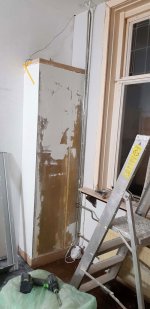
The heating pipes again, difficult. I take it slowly and do it piece by piece.
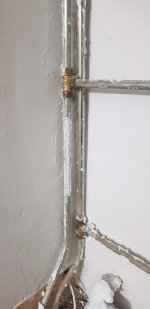
All done here for now. Nice and white again.

Had a look at the window at the front of the room. The last time I painted these was over 20 years ago. The glass-in-led panels have acrylic panels over them. Funny thing is, the paint behind the acrylic panels is still in its original white, while the rest is totally yellowed, a huge difference. Those acrylic panels provide pretty good protection against UV radiation.
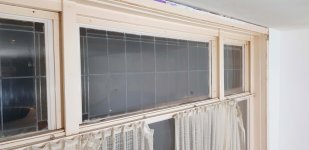
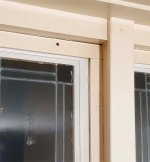
Time to do the very last wall of the room, under the windows. First I have to remove the radiator.
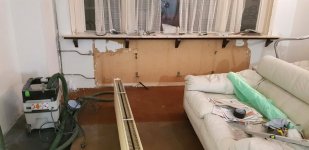
Wallpaper went of easily here, done in 15 minutes.

Used plenty of water to remove the wallpaper. I let it dry overnight and applied primer the very first thing the next morning.
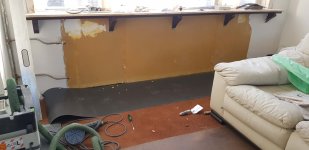
And then I plastered it. You can still see the stuc profiles in there, I removed them later and filled their space with more plaster.
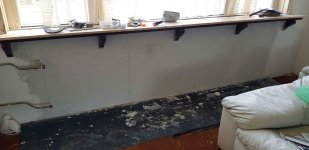
And all done. This is the first time I did an entire patch in one go and it is just good, smooth and straight, no further work needed. Now it needs to dry for a week before I can paint it. Only in the bottom left corner you can see a small plastic bag, this is where my cable for TV and internet enters the house, so I didn't touch it for now to protect the box. I'll fix that later.
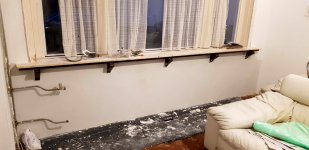
And the entire corner done. Only need to paint it now.
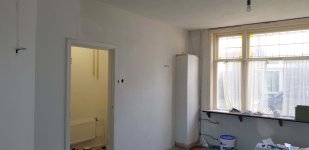
You can see clearly where the plaster is dry or wet. When it is still wet it is greyish, and slowly but surely you see white spots emerge and get bigger and bigger every day.
